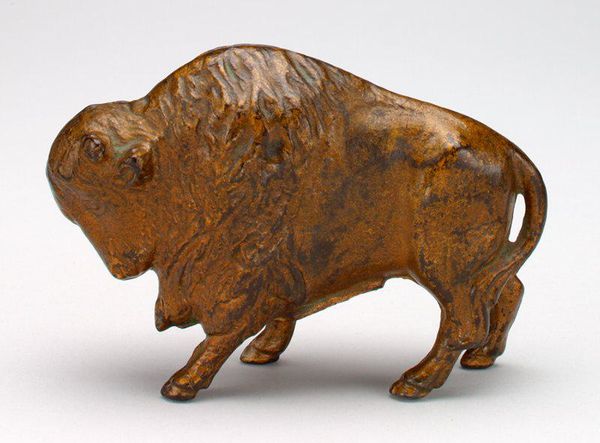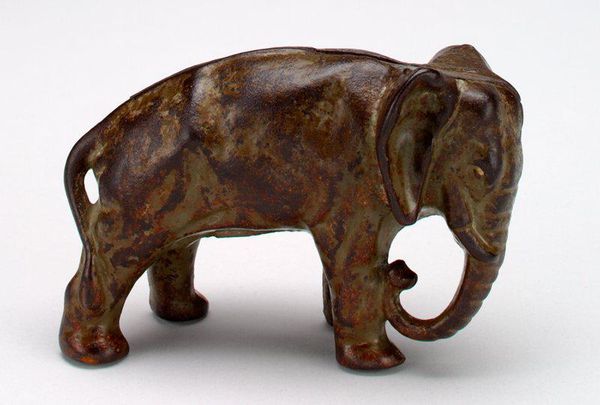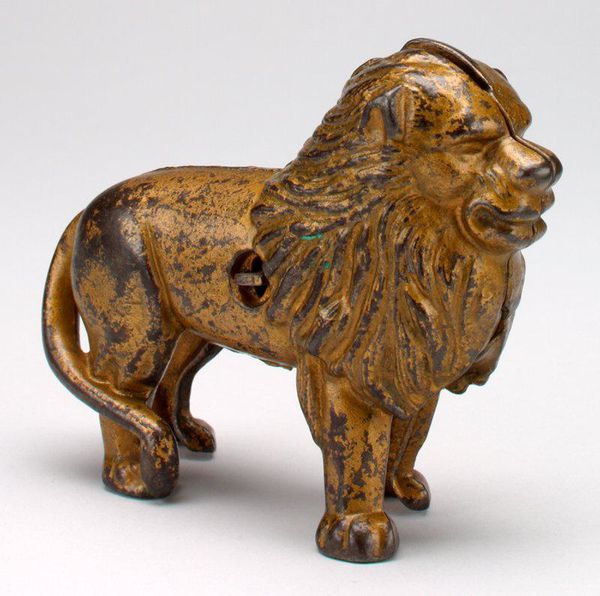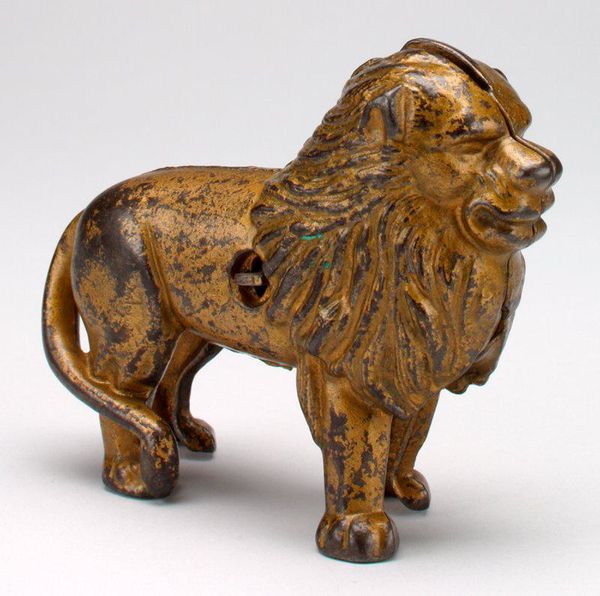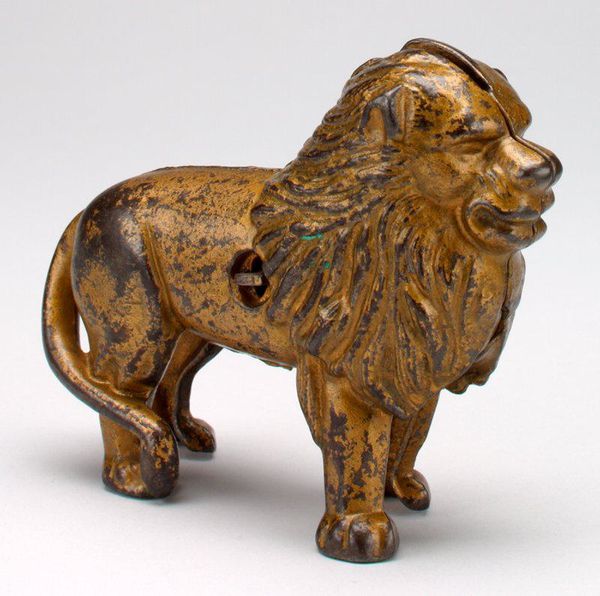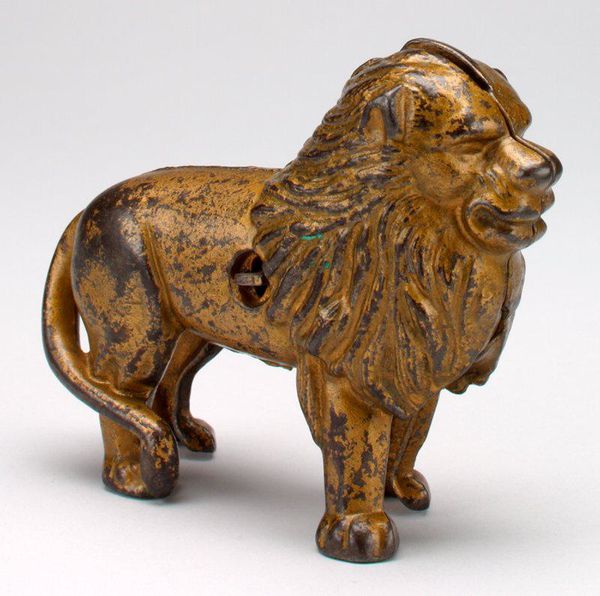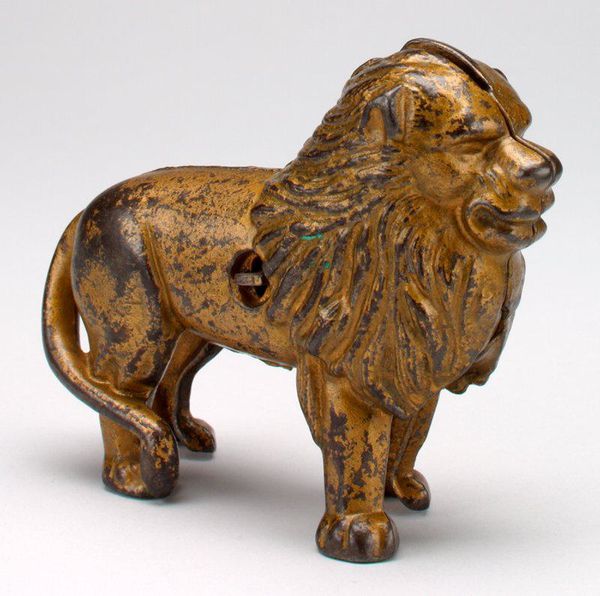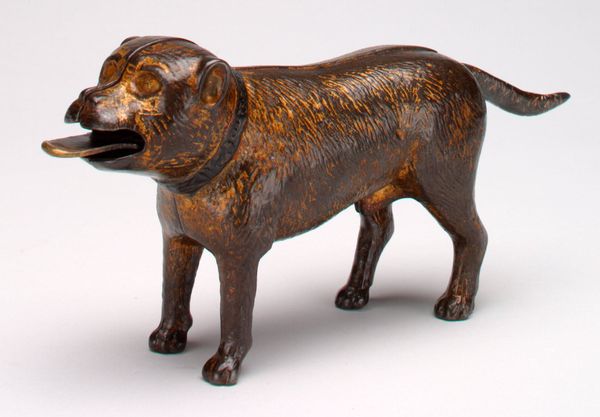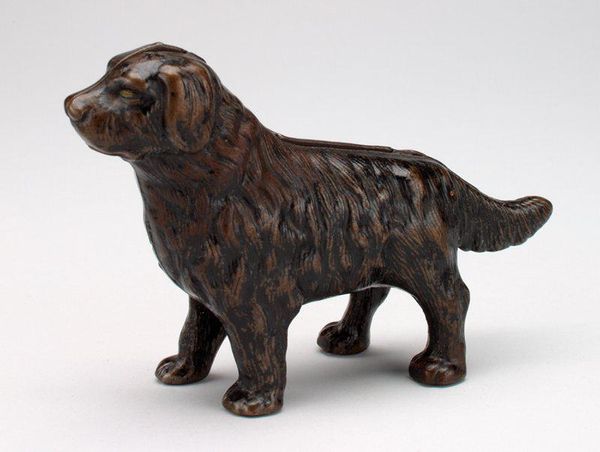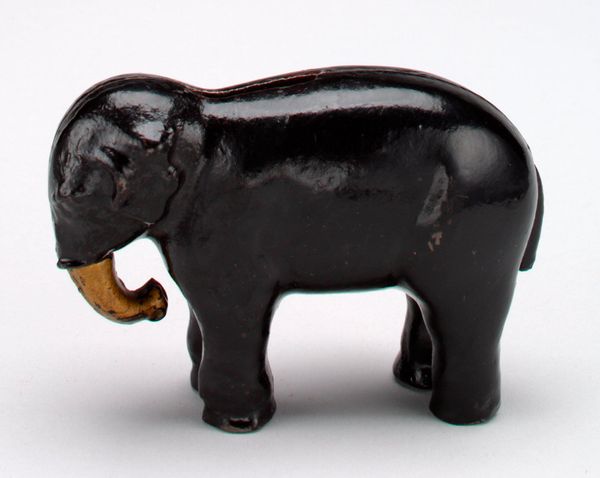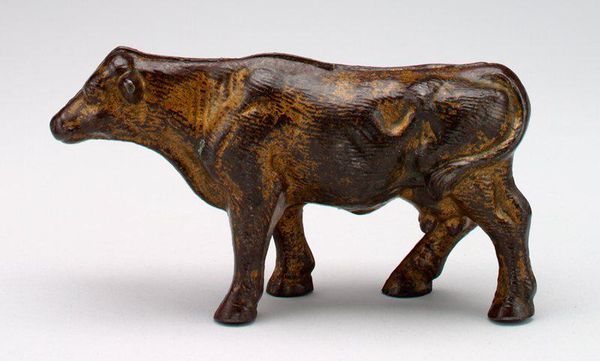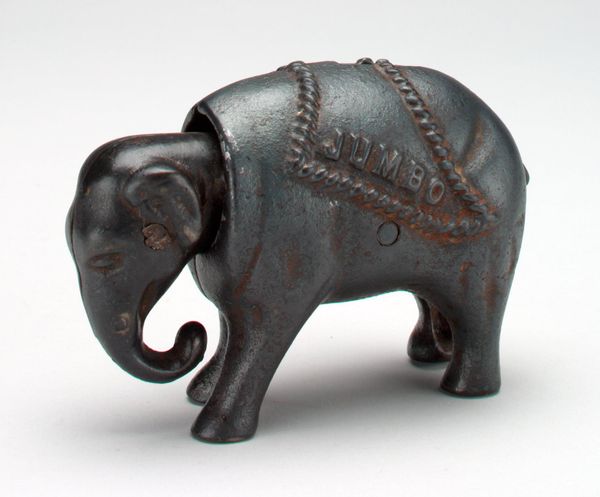
sculpture, wood
#
3d sculpting
#
figuration
#
sculpting
#
sculpture
#
wood
Dimensions: 2 3/4 x 3 7/8 x 1 1/2 in. (6.99 x 9.84 x 3.81 cm)
Copyright: No Known Copyright
Curator: Looking at this small sculpture, I am immediately struck by how the rough texture of the carved wood contrasts with the smooth, rounded form of the bear. Editor: This wooden "Teddy Bear" still bank, believed to have been made between 1905 and 1925, certainly evokes a specific era of production. It's currently housed right here at the Minneapolis Institute of Art. Curator: I wonder about the cultural symbolism embedded within. Considering its time, was the bear intended to represent an innocent toy or perhaps carry a more loaded symbolism relating to masculinity and control over the natural world? The "Teddy Bear," after all, emerged from a hunting trip gone awry, which is problematic at its root. Editor: I am much more concerned with the industrial origins and manufacturing techniques of this charming little piece. It seems to blur the boundaries between folk art and mass-produced commodity. You see those marks? Curator: Yes. The way the piece is made adds another layer. This wasn't a singular artistic vision, it came from a commercial venture with mass distribution in mind. Editor: Exactly! We must examine how the specific choice of material, here wood, relates to accessibility. It also informs us about the socio-economic reach intended by the Arcade Manufacturing Company during its original production and circulation. Curator: True. This object bridges several conversations, from consumerism to the complicated relationship between children, nature, and representation in the early 20th century. Editor: Analyzing the choice to render a wilderness icon with manufactured processes illuminates the economic tensions embedded within consumer culture during the Edwardian Era. Curator: Thinking about this bear's presence here, it feels as though its own complex past is on view, a silent witness of the changes. Editor: Right, it embodies layers of context: economic conditions, material culture, labor—ultimately challenging narrow notions of “high art”.
Comments
No comments
Be the first to comment and join the conversation on the ultimate creative platform.
